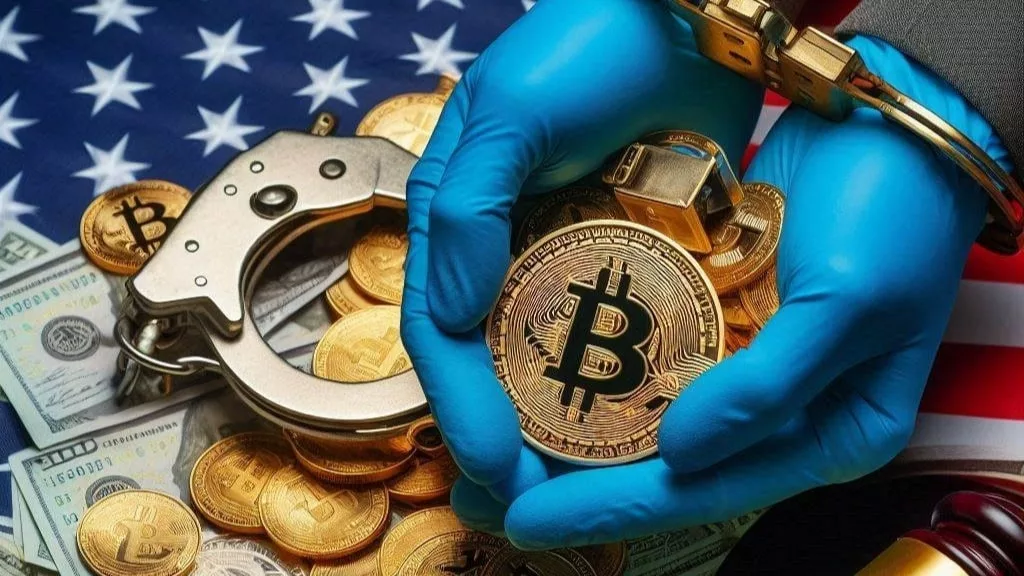
The U.S. government transferred a significant amount of bitcoin from its digital reserves. The transaction involved 97.34 BTC, valued at approximately $8.46 million, originating from the confiscated Sae-Heng funds. This move was detected by Arkham Intelligence, a blockchain analytics firm, which promptly reported the transaction.
The transfer occurred at block height 889,703, with the bitcoin being moved from a Bech32-encoded Segwit wallet, “bc1qeqk,” to another wallet. Notably, the transfer included a small amount of 0.00011516 BTC (roughly $10) to one address, and a substantial 97.3358 BTC was sent to the change wallet “bc1q7qf.” Prior to this shift, the U.S. government’s total bitcoin holdings stood at 198,109 BTC. After accounting for this latest transfer, the government’s remaining holdings are now at 198,012 BTC.
This transfer comes in the wake of a similar action just two weeks ago, when the U.S. authorities moved 298.936 AVAX (Avalanche) tokens from confiscated assets tied to a criminal investigation involving Brian Krewson. The timing of these recent movements has fueled increased speculation about the government’s future plans for its cryptocurrency holdings, especially as the national discussion surrounding bitcoin continues to heat up.
Adding to the intrigue is President Trump’s Executive Order issued on March 6, which outlined plans for the creation of a national bitcoin reserve. The executive order indicated that the U.S. government would hold bitcoin obtained from criminal forfeitures, rather than sell it off. While the specifics of how this national reserve would be managed are still unclear, this development has heightened public interest in the government’s bitcoin activities. Each transfer of bitcoin from federal wallets is now closely scrutinized, with cryptocurrency enthusiasts and financial analysts alike eager to understand the broader implications.
Arkham Intelligence has been instrumental in tracking these types of blockchain transactions. According to the firm, the 97.34 BTC transfer represents just a small portion of the government’s ongoing management of confiscated cryptocurrencies. The U.S. government’s crypto holdings have been a source of significant interest for years, especially given the increasing role of digital currencies in the global financial system. While many government-held assets, such as stocks or bonds, are relatively easy to track, the opaque nature of cryptocurrencies has made it more difficult for observers to monitor how they are being managed.
The U.S. government’s bitcoin holdings were primarily accumulated through seizures related to criminal investigations, including those involving dark web markets, ransomware attacks, and other illegal activities. With the rise of bitcoin’s value, the federal government’s digital assets have appreciated significantly over time. As a result, questions surrounding how these assets will be utilized in the future remain a topic of debate. Some argue that the government could leverage these holdings as part of a broader strategy to stabilize the economy or serve as a hedge against inflation, while others caution against the risks of centralizing cryptocurrency reserves.
At present, the U.S. government’s bitcoin strategy appears to involve a hands-off approach, at least publicly, with plans to retain the assets rather than liquidate them. The movement of these digital assets has drawn attention not only from cryptocurrency traders but also from lawmakers and regulators who are keen to understand how these holdings will be managed in the years to come.
The shift of 97.34 BTC on March 27 adds another layer to the growing conversation about the U.S. government’s role in the evolving cryptocurrency landscape. It remains to be seen how these movements will affect the price of bitcoin, and whether they signal a broader trend of government-managed digital reserves. For now, observers will continue to track every significant movement of the government’s crypto holdings, as these actions could shape the future of digital currency policy in the U.S.


Get the latest Crypto & Blockchain News in your inbox.